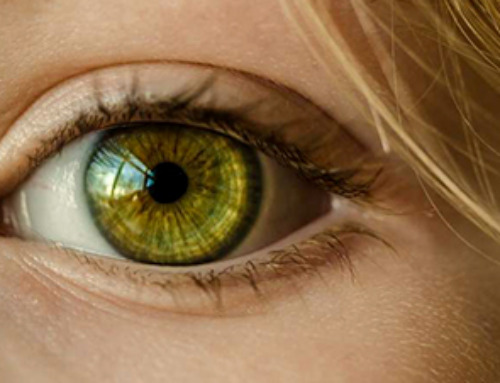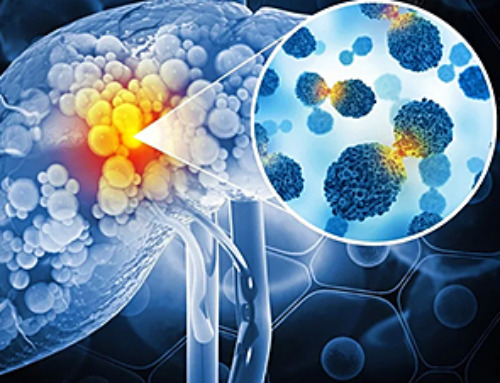| An international research team, led by scientists from the EMPA (Zurich) and the International Iberian Nanotechnology Laboratory, which has researchers from the UPV/EHU, has succeeded in building chains of quantum magnets made of nanographene that capture the essence of one of the core models of quantum magnetism. The team’s results (Nature, “Observation of fractional edge excitations in nanographene spin chains”) have implications for understanding quantum magnetism on the nanoscale and may open the door to building quantum computers. | |
| We are all used to the idea that simple units combine to form more complex structures. So atoms combine to form molecules, which in turn combine to form cells, and cells form tissue, ultimately giving rise to living beings. | |
| In the quantum world, this process may take place in reverse in such a way that the interaction between complex particles results in simpler particles. So, under certain circumstances, the interaction between electrons, indivisible particles with electric charge e, gives rise to the emergence of particles with charge e/3. This phenomenon is known as fractionalization. | |
Quantum magic: fractionalizing spins |
|
| All elementary particles have intrinsic properties such as mass or charge that are intuitive to us, and others such as spin, which can be visualised like a compass. However, unlike normal compasses, which can point in any direction, the spin of quantum systems is quantized, and can only assume a discrete set of values. For example, we say that the spin of an electron is ½ and can only take two values. Particles with spin 1 can take three values. | |
| In the 1980s the British physicist Duncan Haldane built a mathematical model for spin 1 particles in which the fractionalization of the spins took place. So when a one-dimensional chain of indivisible spin 1 particles interacted with their neighbours, they gave rise to the emergence of spin ½ particles on the edges of the chain. | |
| Like the magic trick in which the magician saws a person in half and pulls the two halves apart, the Haldane model allows spins 1 to be fractionalized and separated. It is one of the core models of quantum magnetism, and his work earned him the Nobel Prize in 2016. | |
One-dimensional chains of magnetic molecules assembled from graphene |
|
| Experimental confirmation of this prediction was challenging for various reasons, chief among them being the fact that one-dimensional materials do not exist. Indirect evidence of the phenomenon of spin fractionalization in organometallic materials containing chains of magnetic atoms existed, but direct observation remained elusive. | |
| Now, however, that observation has been made by an international team of researchers, including the Ikerbasque researcher David Jacob of the Department of Polymers and Advanced Materials: Physics, Chemistry and Technology at the UPV/EHU; he has collaborated in this work with the INL, the University of Alicante, the EMPA in Zurich and the University of Dresden. | |
| To accomplish this difficult feat, the researchers combined organic chemistry techniques with ultra-high vacuum surface science in order to synthesise graphene molecules with spin 1 that form unidimensional chains. Using a tunnelling microscope, the team of researchers were able to study, with atomic resolution, the quantum states of the chain adsorbed on a gold surface, compare them with those predicted by the theory, and establish that the system did in fact behave like the Haldane model. | |
| In particular, in chains with a sufficiently high number of magnetic molecules, the researchers found Kondo resonances at the tips of the chain, a phenomenon that occurs when spin ½ particles interact with the electrons in a conductor such as gold. From one-dimensional chains to two-dimensional networks and quantum computers | |
| The researchers say that this work “shows the potential for using nanographenes to form two-dimensional networks of nanomagnets, enabling predictions analogous to Haldane’s to be confirmed, such as, for example, the existence of quantum states that would allow quantum computation to be carried out”. |
News
Vision can be rebooted in adults with amblyopia, study suggests
Temporarily anesthetizing the retina briefly reverts the activity of the visual system to that observed in early development and enables growth of responses to the amblyopic eye, new research shows. In the common vision [...]
Ultrasound-activated Nanoparticles Kill Liver Cancer and Activate Immune System
A new ultrasound-guided nanotherapy wipes out liver tumors while training the immune system to keep them from coming back. The study, published in Nano Today, introduces a biodegradable nanoparticle system that combines sonodynamic therapy and cell [...]
Magnetic nanoparticles that successfully navigate complex blood vessels may be ready for clinical trials
Every year, 12 million people worldwide suffer a stroke; many die or are permanently impaired. Currently, drugs are administered to dissolve the thrombus that blocks the blood vessel. These drugs spread throughout the entire [...]
Reviving Exhausted T Cells Sparks Powerful Cancer Tumor Elimination
Scientists have discovered how tumors secretly drain the energy from T cells—the immune system’s main cancer fighters—and how blocking that process can bring them back to life. The team found that cancer cells use [...]
Very low LDL-cholesterol correlates to fewer heart problems after stroke
Brigham and Women's Hospital's TIMI Study Group reports that in patients with prior ischemic stroke, very low achieved LDL-cholesterol correlated with fewer major adverse cardiovascular events and fewer recurrent strokes, without an apparent increase [...]
“Great Unified Microscope” Reveals Hidden Micro and Nano Worlds Inside Living Cells
University of Tokyo researchers have created a powerful new microscope that captures both forward- and back-scattered light at once, letting scientists see everything from large cell structures to tiny nanoscale particles in a single shot. Researchers [...]
Breakthrough Alzheimer’s Drug Has a Hidden Problem
Researchers in Japan found that although the Alzheimer’s drug lecanemab successfully removes amyloid plaques from the brain, it does not restore the brain’s waste-clearing system within the first few months of treatment. The study suggests that [...]
Concerning New Research Reveals Colon Cancer Is Skyrocketing in Adults Under 50
Colorectal cancer is striking younger adults at alarming rates, driven by lifestyle and genetic factors. Colorectal cancer (CRC) develops when abnormal cells grow uncontrollably in the colon or rectum, forming tumors that can eventually [...]
Scientists Discover a Natural, Non-Addictive Way To Block Pain That Could Replace Opioids
Scientists have discovered that the body can naturally dull pain through its own localized “benzodiazepine-like” peptides. A groundbreaking study led by a University of Leeds scientist has unveiled new insights into how the body manages pain, [...]
GLP-1 Drugs Like Ozempic Work, but New Research Reveals a Major Catch
Three new Cochrane reviews find evidence that GLP-1 drugs lead to clinically meaningful weight loss, though industry-funded studies raise concerns. Three new reviews from Cochrane have found that GLP-1 medications can lead to significant [...]
How a Palm-Sized Laser Could Change Medicine and Manufacturing
Researchers have developed an innovative and versatile system designed for a new generation of short-pulse lasers. Lasers that produce extremely short bursts of light are known for their remarkable precision, making them indispensable tools [...]
New nanoparticles stimulate the immune system to attack ovarian tumors
Cancer immunotherapy, which uses drugs that stimulate the body’s immune cells to attack tumors, is a promising approach to treating many types of cancer. However, it doesn’t work well for some tumors, including ovarian [...]
New Drug Kills Cancer 20,000x More Effectively With No Detectable Side Effects
By restructuring a common chemotherapy drug, scientists increased its potency by 20,000 times. In a significant step forward for cancer therapy, researchers at Northwestern University have redesigned the molecular structure of a well-known chemotherapy drug, greatly [...]
Lipid nanoparticles discovered that can deliver mRNA directly into heart muscle cells
Cardiovascular disease continues to be the leading cause of death worldwide. But advances in heart-failure therapeutics have stalled, largely due to the difficulty of delivering treatments at the cellular level. Now, a UC Berkeley-led [...]
The basic mechanisms of visual attention emerged over 500 million years ago, study suggests
The brain does not need its sophisticated cortex to interpret the visual world. A new study published in PLOS Biology demonstrates that a much older structure, the superior colliculus, contains the necessary circuitry to perform the [...]
AI Is Overheating. This New Technology Could Be the Fix
Engineers have developed a passive evaporative cooling membrane that dramatically improves heat removal for electronics and data centers Engineers at the University of California San Diego have created an innovative cooling system designed to greatly enhance [...]





















